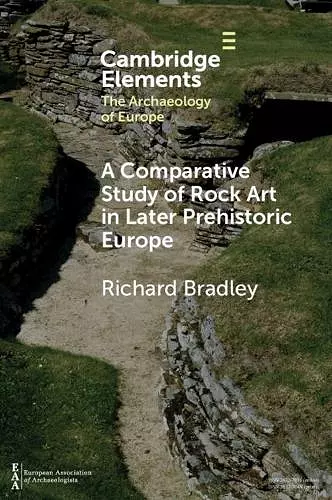A Comparative Study of Rock Art in Later Prehistoric Europe
Format:Paperback
Publisher:Cambridge University Press
Published:22nd Oct '20
Currently unavailable, and unfortunately no date known when it will be back

Rock outcrops were once decorated with images featuring people, animals, weapons and boats. This Element explains how they are interpreted.
In prehistoric Europe natural surfaces in the landscape were often painted or carved. It happened between the adoption of farming and the origins of the state, but these images are rarely integrated into wider accounts of prehistoric archaeology. This Element reviews new research and attempts to remedy this problem.The Element summarises the state of knowledge about four styles of prehistoric rock art in Europe current between the late Mesolithic period and the Iron Age. They are the Levantine, Macroschematic and Schematic traditions in the Iberian Peninsula; the Atlantic style that extended between Portugal, Spain, Britain and Ireland; Alpine rock art; and the pecked and painted images found in Fennoscandia. They are interpreted in relation to the landscapes in which they were made. Their production is related to monument building, the decoration of portable objects, trade and long distance travel, burial rites, and warfare. A final discussion considers possible connections between these separate traditions and the changing subject matter of rock art in relation to wider developments in European prehistoric societies.
ISBN: 9781108794497
Dimensions: 150mm x 230mm x 5mm
Weight: 150g
75 pages